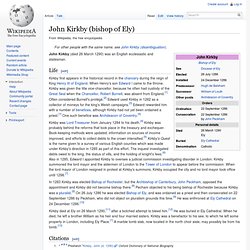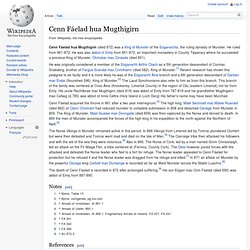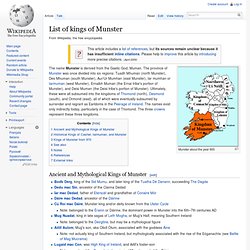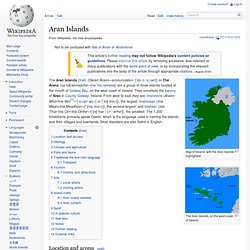

John Kirkby (bishop of Ely) John Kirkby (died 26 March 1290) was an English ecclesiastic and statesman.

Kirkby first appears in the historical record in the chancery during the reign of King Henry III of England. When Henry's son Edward I came to the throne, Kirkby was given the title vice-chancellor, because he often had custody of the Great Seal when the Chancellor, Robert Burnell, was absent from England.[1] Often considered Burnell's protégé,[2] Edward used Kirkby in 1282 as a collector of moneys for the king's Welsh campaigns.[3] Edward rewarded him with a number of benefices, although Kirkby had not yet been ordained a priest.[1] One such benefice was Archdeacon of Coventry.[4] Kirkby was Lord Treasurer from January 1284 to his death.[4] Kirkby was probably behind the reforms that took place in the treasury and exchequer.
Kirkby died at Ely on 26 March 1290,[11] after a botched attempt to bleed him.[12] He was buried in Ely Cathedral. Great Seal of the Realm. An impression in wax of the Great Seal of the Realm (1953) History[edit] Edward the Confessor sometime before A.D. 1066 started using a "Great Seal" casting in wax of his own visage to signify that a document carried the force of his will.

With some exceptions, each subsequent British monarch has chosen his or her own design for the Great Seal. In 1688, before attempting to flee to France, James II is said to have thrown his Great Seal of the Realm into the River Thames in the hope that the machinery of government would cease to function. The story is of dubious authority, but if the seal was thrown into the river, it was certainly recovered soon afterwards, as James's successors, William III and Mary used the same seal matrix, fairly crudely adapted to represent their dual monarchy. Ólchobar mac Cináeda. Cenn Fáelad hua Mugthigirn. Cenn Fáelad hua Mugthigirn (died 872) was a King of Munster of the Eoganachta, the ruling dynasty of Munster.

He ruled from 861-872. He was also abbot of Emly from 851-872, an important monastery in County Tipperary where he succeeded a previous King of Munster, Ólchobar mac Cináeda (died 851). He was originally considered a member of the Eóganacht Airthir Cliach as a 5th generation descendant of Cormac Sriabderg, brother of Fergus Scandal mac Crimthainn (died 582), King of Munster.[1] Recent research has shown this pedigree to be faulty and it is more likely he was of the Eóganacht Áine branch and a 6th generation descendant of Garbán mac Éndai (flourished 596), King of Munster.[2] The Laud Synchronisms also refer to him as from this branch.
List of kings of Munster. Munster about the year 900 Ancient and Mythological Kings of Munster[edit] Historical Kings of Cashel, Iarmuman, and Munster[edit] These were not true kings of Munster until the late 7th century, when the Corcu Loígde fell entirely from power, some time after losing their grip on the Kingdom of Osraige.

Thus approximately the first twenty five kings below are best described as Kings of Cashel, Kings of Iarmuman, or Kings of the Eóganachta. Faílbe Flann mac Áedo Duib, the only exception, was the first Eóganacht to significantly project outside Munster, but Iarmuman was still a great rival of Cashel in his time, and little is known of his successors before Cathal mac Finguine. At and before this time also flourished the independent Uí Fidgenti and Uí Liatháin, a pair of shadowy sister kingdoms whose official origins appear to have been tampered with in the 8th century in a semi-successful attempt to integrate them into the Eóganachta political structure and genealogical scheme.
Eóganacht Áine. Kirkby-in-Furness. Coordinates: Kirkby-in-Furness is a village in the Furness area of Cumbria, England.

It is about 5 km south of Broughton in Furness and 8 km northwest of Ulverston. KIRBY-KERBY-L [Kirby] PASSENGER And IMMIGRATION LIST INDEX. Aran Islands. Map of Ireland, with the Aran Islands highlighted The Aran Islands, on the west coast of Ireland Location and access[edit] The approaches to the bay between the Aran Islands and the mainland are as follows: North Sound / An Súnda ó Thuaidh (more accurately Bealach Locha Lurgan) lies between Inishmore and Lettermullen, County Galway.Gregory's Sound / Súnda Ghríoghóra (formerly known as Bealach na h-Áite) lies between Inishmore and Inishmaan.Foul Sound / An Súnda Salach (formerly known as Bealach na Fearbhaighe) lies between Inishmaan and Inisheer.South Sound / An Súnda ó Dheas (formerly known as Bealach na Fínnise) lies between Inisheer and County Clare.Ferries operate to all 3 Islands from Rossaveal in Co.

Galway (Year Round) and Doolin in Co. Geology[edit] A view over the karst landscape on Inishmore, from Dún Aengus, an ancient stone fort. The islands' geology is mainly karst limestone and is thus closely related to the Burren in Co. Climate and agriculture[edit] Digital Scriptorium.